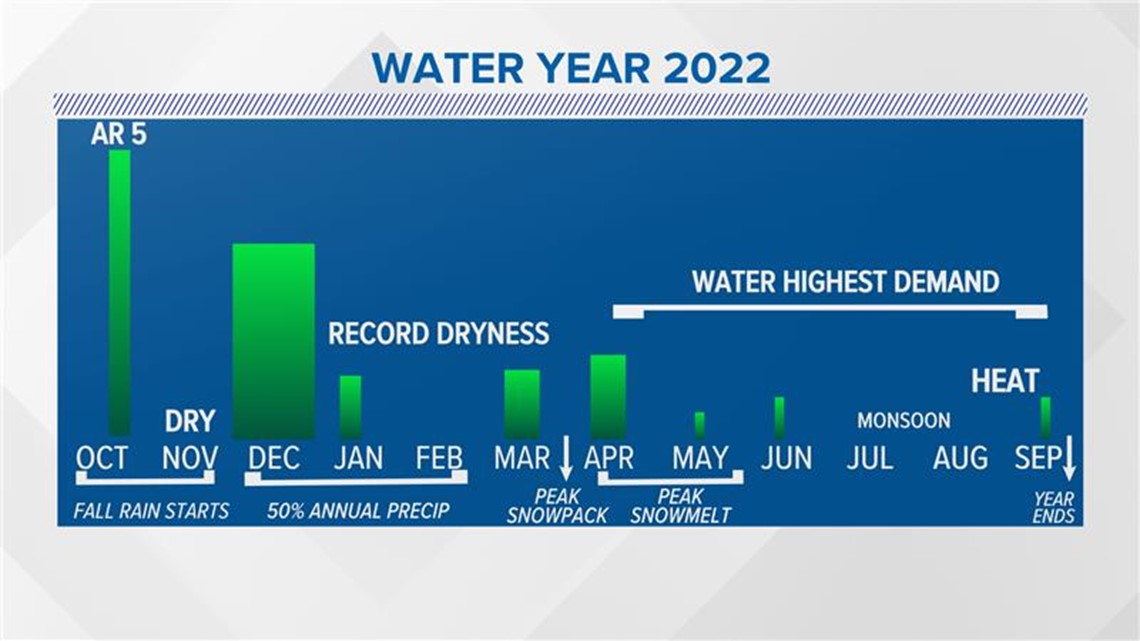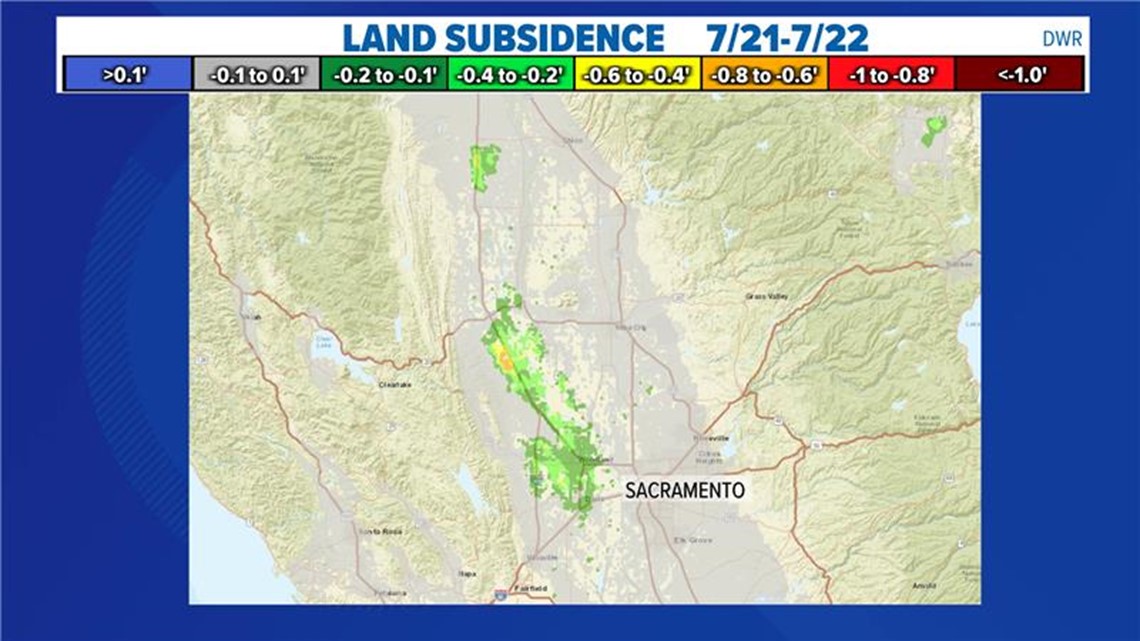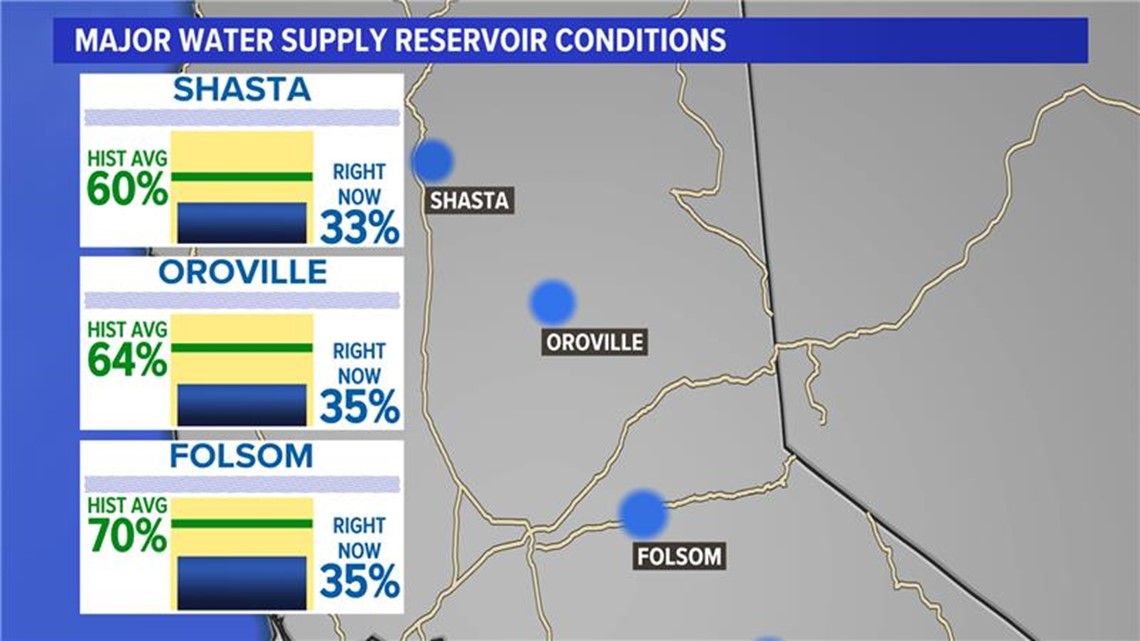SACRAMENTO, Calif. — Oct. 1 marked the first day of a crucial new water year for California.
Experts from the Department of Water Resources (DWR) hosted a media briefing Monday to recap the 2022 water year that ended Sept. 30.
California had a wetter water year than the previous two years but not nearly enough precipitation fell on the state to drop out of the drought, which is looking increasingly likely to drag on through the winter.
Here are the top five things to know from the briefing:
1. Extreme swings bring unpredictable weather pattern
The term "hydroclimatic whiplash," coined by UCLA climate scientist Daniel Swain, is an excellent way to describe California's changing precipitation patterns due to climate change.
The 2022 Water Year was no exception.


The year started out with a bang with the "exceptional" atmospheric river that struck the state in October, setting Sacramento's all time daily precipitation record with 5.44 inches in 24 hours.
A record wet December provided hope that the drought would terminate, only to be followed by the driest start to a calendar year in California history, according to Michael Anderson, state climatologist with the Department of Water Resources.
2. Near-record warmth experienced across the state
Average temperatures were very warm in 2022 but not quite as warm as the previous year, according to Anderson.
Data from the Western Regional Climate Center shows that most of the state was well over the 90% percentile of average temperature rankings.
3. Parts of the Sacramento Valley sunk due to over-reliance of groundwater
Drought periods result in a stronger reliance of groundwater due to diminished surface water sources.
"We know that on average groundwater would provide about 40% of the state's urban and agricultural water supplies, but during droughts, that percentage increases to about 60%," Jeanine Jones, interstate resources manager for DWR, said.
The increased use of groundwater has resulted in portions of the Sacramento Valley sinking, much like the subsidence the San Joaquin Valley has seen for decades.


4. Measuring snowpack from the sky
DWR is increasing flights over the snowpack using LIDAR (Light Detection and Ranging) technology. The mapping technology will allow for more accuracy in mapping snowpack by collecting data under the forest canopy, which was difficult before LIDAR.
"It's really good to see this program expand and monitor the snow watersheds that provide California's supply. It's important to understand these patterns as they're changing and becoming more dynamic," Anderson said.
5. Water storage improved, but still well below average
A few major storms did most of the work in improving reservoir levels, but water levels in Northern California's major reservoirs are still much below-average heading into the new water year.


WATCH ALSO:



















